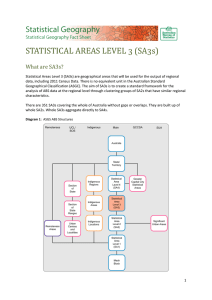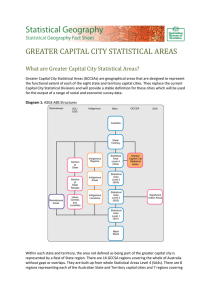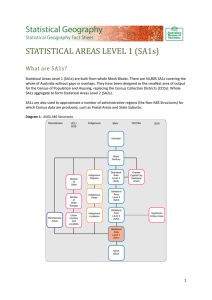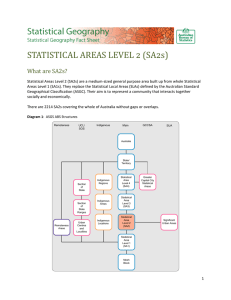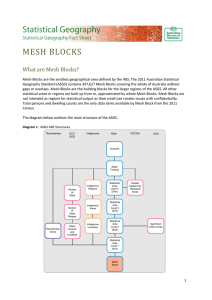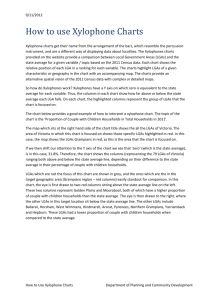LOCAL GOVERNMENT AREAS (ASGS)?
advertisement
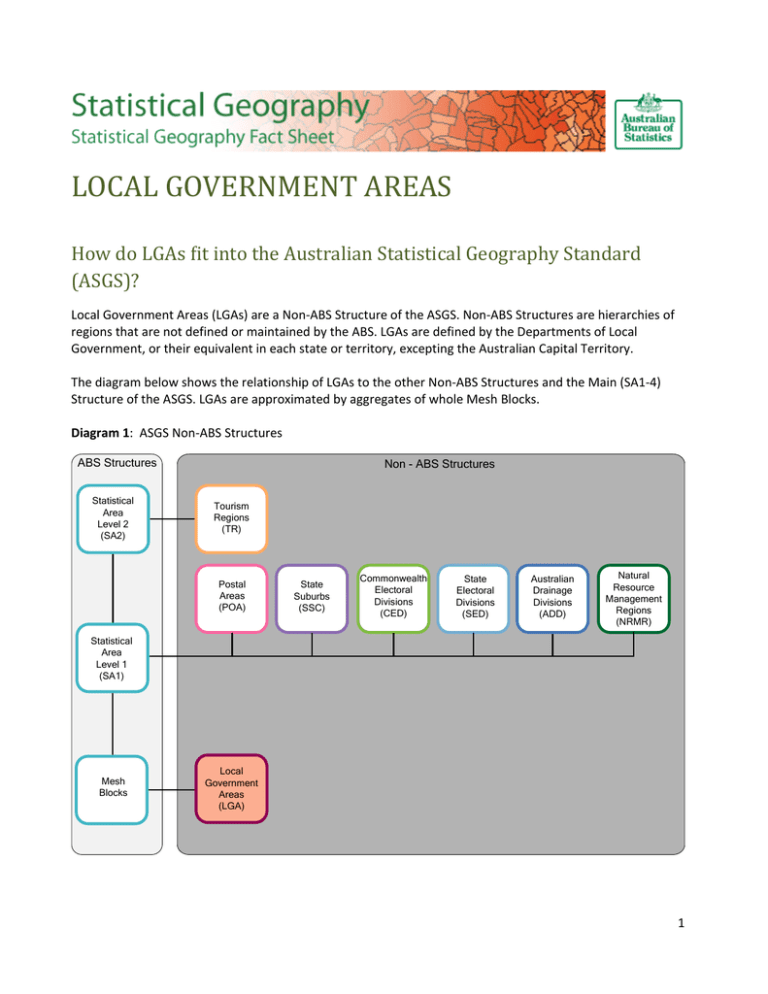
LOCAL GOVERNMENT AREAS How do LGAs fit into the Australian Statistical Geography Standard (ASGS)? Local Government Areas (LGAs) are a Non-ABS Structure of the ASGS. Non-ABS Structures are hierarchies of regions that are not defined or maintained by the ABS. LGAs are defined by the Departments of Local Government, or their equivalent in each state or territory, excepting the Australian Capital Territory. The diagram below shows the relationship of LGAs to the other Non-ABS Structures and the Main (SA1-4) Structure of the ASGS. LGAs are approximated by aggregates of whole Mesh Blocks. Diagram 1: ASGS Non-ABS Structures ABS Structures Statistical Area Level 2 (SA2) Non - ABS Structures Tourism Regions (TR) Postal Areas (POA) State Suburbs (SSC) Commonwealth Electoral Divisions (CED) State Electoral Divisions (SED) Australian Drainage Divisions (ADD) Natural Resource Management Regions (NRMR) Statistical Area Level 1 (SA1) Mesh Blocks Local Government Areas (LGA) 1 Will less data be available at the LGA level as a consequence of the move to the ASGS? The availability of data at LGA-level is not be lessened as a consequence of the move to the ASGS. The ABS will continue to make a wide range of the Census and non-Census data available for LGAs, including Estimated Resident Population. The inclusion of LGAs in the Non-ABS Structures of the ASGS is recognition that the ABS has no role in the definition of LGAs. When will the LGAs be updated? As the Non-ABS Structure represent regions that are subject to ongoing change, the ABS will release revised publications for ASGS Non-ABS Structures. LGAs will only be updated where significant change has occurred in the past year. If LGAs are built from Mesh Blocks, won't this result in a loss of accuracy? The 2011 Mesh Block boundaries align exactly with the 2010 LGA boundaries. The difference between the 2011 LGAs and the Mesh Blocks is not statistically significant. There is always the potential for a state or territory government to restructure its LGAs in such a way as to cause a statistical impact. This would be unlikely to be significant because: The large number of Mesh Blocks and their relatively small size (approximately 347,000 across the whole of Australia) allows them to approximate any reasonably shaped large geographic region, and this will allow LGAs to be accurately approximated. The Mesh Block boundaries already rest on significant features such as roads, rivers and gazetted locality boundaries that are likely to be used as the boundaries for any new LGAs. The ABS will encourage State Governments to consider Mesh Blocks and statistical impact in any review of their LGAs. The ABS is providing correspondences from the ASGS to LGAs. For a full list of correspondences that are available, please view the ‘Correspondences’ chapter of the ABS Statistical Geography web site: http://www.abs.gov.au/geography LGAs are part of the ASGS and the ASGC, both of which have been released for 2011. What is the difference between the two? The boundaries for the 2011 ASGS and 2011 ASGC releases of the LGAs are effectively identical. This will facilitate a smooth transition between the ASGS and the ASGC. There are two minor differences between the ASGS LGAs and the ASGC LGAs. 2 The ASGS LGAs do not contain spatial objects for unincorporated regions. This is standard for all Non-ABS Structures within the ASGS and reflects that these areas are not covered by LGAs. The ASGC LGAs do not contain a record for ‘No usual address’ as ‘No usual address’ has traditionally not been included in the ASGC. From the 1 July 2012 LGAs are being released as part of the ASGS only. The final publication of the ASGC was the 1 July 2011 edition. Where can I get further information? More information on the ASGS is available on the ABS Statistical Geography website: http://www.abs.gov.au/geography For more details about the Non-ABS Structures, please refer to Australian Statistical Geography Standard (ASGS): Volume 3 – Non ABS Structures, July 2011 (cat. no. 1270.0.55.003). Any questions or comments can be emailed to geography@abs.gov.au 3
